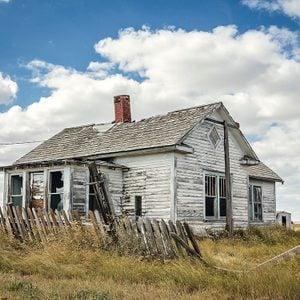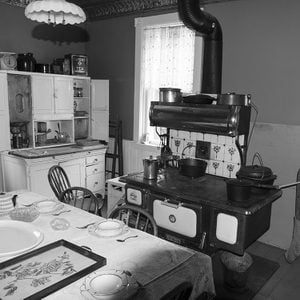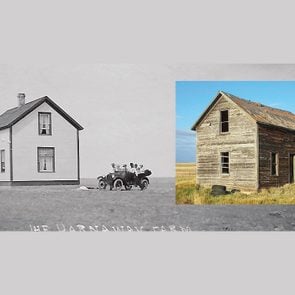Remembering the Royal Lake Country Store
Once a hub for this farming community in central Saskatchewan, all that's left of the Royal Lake Country Store is an abandoned shell—and this contributor's fond memories.
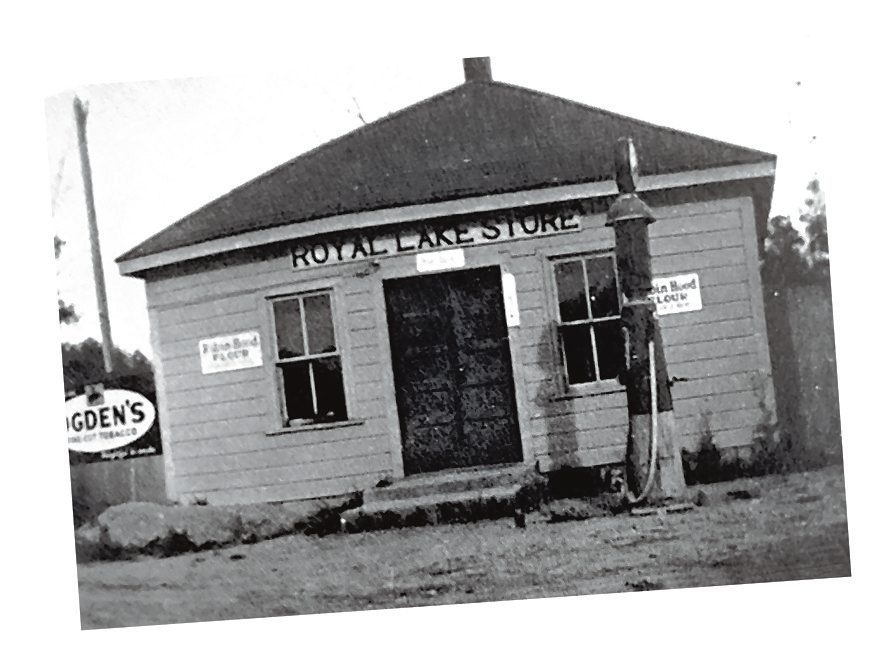
What the Royal Lake Store was like
Royal Lake Store was a country store located 12 miles west of Leask in central Saskatchewan. It was built by Hungarian immigrants in the 1930s and, after changing ownership several times, closed in 1956.
During those years, there was a family living on every quarter section of land. Travel into Leask was lengthy and difficult, so there was a definite need for the services a country store provided. Gas pumps were installed to further meet the needs of the community. Travellers on their way to Emerald Lake Resort often stopped for gas and groceries.
The building was 24 by 30 feet in size with cedar shingles and wood siding. It was painted a cream colour with green trim. Inside, the walls were plastered then calcimined (whitewashed).
A tall board fence surrounded the store on three sides. Inside the fenced area there was a garage, a warehouse and a shed for barrels of coal oil. A small log barn housed the family cow.
An ice house was filled with blocks of ice that were cut from Royal Lake in the winter and packed in sawdust. A metal insulated cooler inside the store was used to keep grocery items cool, using these blocks of ice throughout the summer months.
Two-thirds of the building was used as the store and the other third was used for living quarters. The living area was divided into two rooms, a combined kitchen and dining area, and a bedroom. A dirt cellar underneath the living area provided further cool storage. The store part was heated by wood and the living area was warmed by the cook stove. On cold days, patrons would stand around the wood heater in the store to warm up and swap stories.
There was a hitching post out front to tie your horse, but many patrons just walked there in the summer. The store was open Monday through Saturday, as Sundays were reserved for going to church.
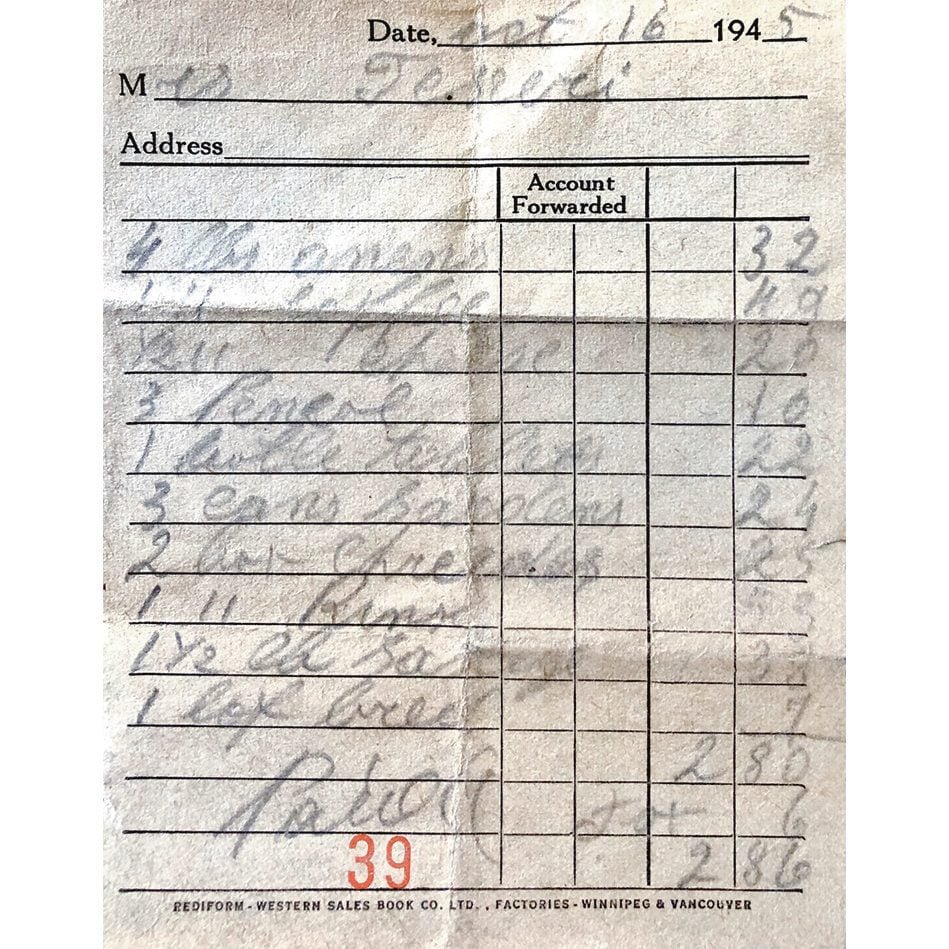
The store served as the hub of country life
Mail was brought to the store from Leask twice a week. These were the busiest shopping days and it was also a good time to visit with neighbours. Bills were written out by hand. Many items came in bulk, not prepackaged, and needed to be weighed and bagged when a purchase was made.
My husband’s grandma made purchases at Royal Lake Store in the 1940s including onions, coffee, cheese, sardines, sausage and bread. My mother-in-law could buy two chocolate bars for five cents at the store when she was a kid in the ’30s. She had never seen candy before and didn’t know what to do with it.
Customers often exchanged goods they had for things they needed. They would bring in eggs and butter to trade for coffee or tea. My own grandma often walked to the store with a grape basket full of eggs to trade for other items.
Jars of candy sat behind the counter. My husband’s uncle remembers being just tall enough as a young boy to reach up and place a coin on the counter to buy some candy. My brother-in-law fondly remembers getting a raw wiener given to him by the store owner.
Wooden crates of soda pop in glass bottles sat stacked behind the fence. Occasionally, a kid would reach through the fence, grab a bottle of pop, drink it and then put the empty bottle back in the case. This did not go over well when the owner found out.
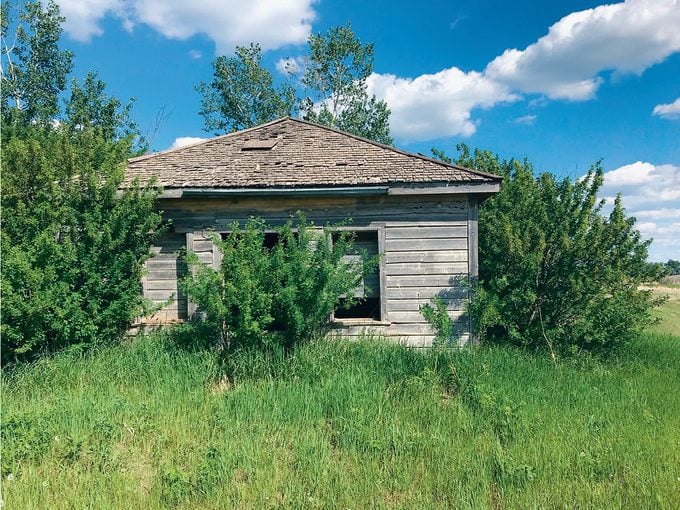
What remains of the Royal Lake Store
My in-laws have owned the land where the store once stood since 1956. Only the outer shell of the main store building remains standing. The other buildings have been moved to use for other purposes or torn down over the years. The gas pump remained in its original location for years until sadly it was vandalized and parts of it were stolen.
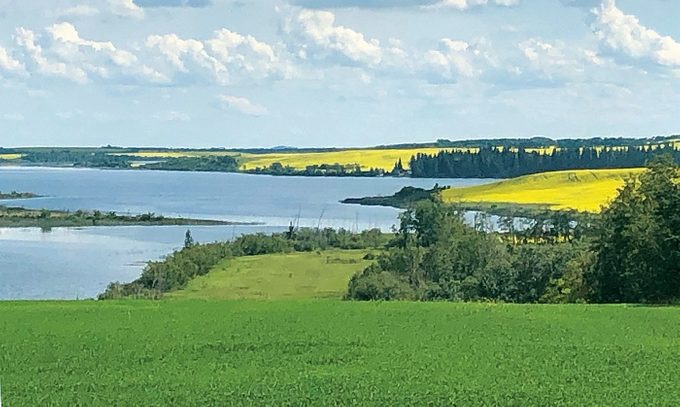
Royal Lake today
Royal Lake itself is about a half mile as the crow flies from where the store was. In the 1920s and 1930s, the lake was a popular picnic, fishing and boating spot. It sported a sandy beach and a pavilion that was built over the water. Dances were held there on Friday nights with music provided by local musicians.
Eventually, the lake water went down and trees and vegetation grew into the areas once used for recreation. The war broke out and people moved on. A new road was built that didn’t go right by there anymore. The lake isn’t accessible today to boats or vehicles, but the view of it is still beautiful.
The mental images of the store customers standing around the wood stove visiting and people happily dancing the night away at the pavilion on the lake are my favourites. These must have been things that the country folk looked forward to back in the day.
Next, discover what Prairie life was like during the Great Depression.
